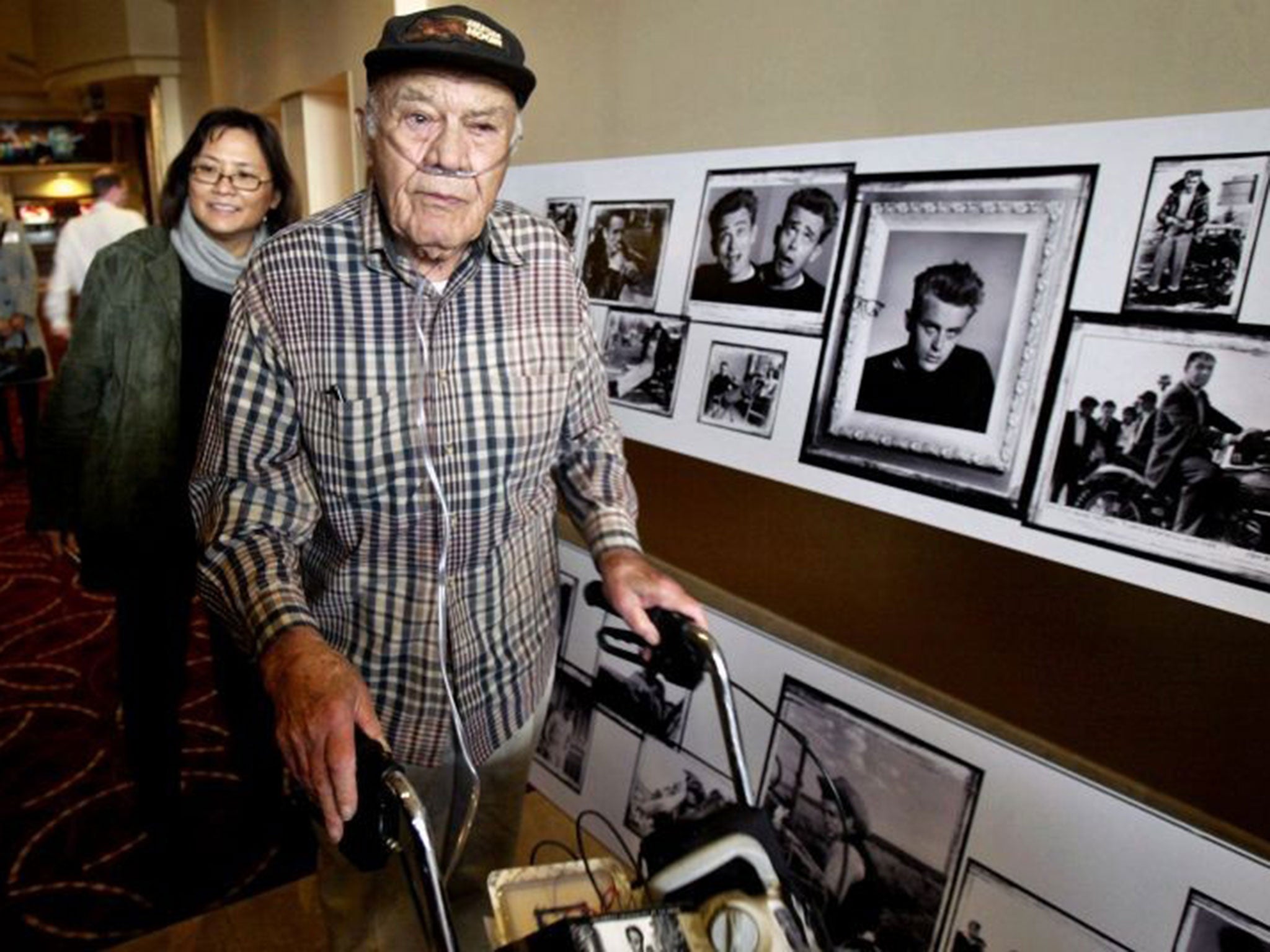Phil Stern: Photographer who brought a casual intimacy to his portraits of stars like Dean, Monroe, Bogart and Sinatra
'I didn’t usually care to know them,' he said of the actors he photographed. 'So many of them were frankly a pain'

The photographer Phil Stern brought a casual intimacy to the art of Hollywood image-making with his revealing portraits of James Dean, Marilyn Monroe, Marlon Brando and countless other stars. Wounded while capturing front-line images of combat during the Second World War, he eventually settled in Los Angeles, where he spent decades photographing movie actors and jazz musicians. He also was designated the official photographer of the 1961 presidential inauguration of John F Kennedy.
Shooting behind the scenes and in offhand, unscripted settings, Stern defied the conventions of traditional publicity photography. His informal shots helped define the lasting allure of many of Hollywood’s most famous mid-century stars. "I was never interested in the glamour," he said. "I was interested in the tears and agony behind it."
He was with a weary Frank Sinatra in a recording studio at 3am, quietly earning the trust of the notoriously prickly singer and actor. When Sinatra was asked to produce Kennedy’s inaugural entertainment he invited Stern along. One hazy image, in which Sinatra lights Kennedy’s cigarette or cigar, seems to encapsulate the moment when Washington acquired the cachet of Hollywood. Stern also photographed Brando wearing a leather jacket and biker boots during the making of The Wild One in 1953 and was backstage to capture Monroe and Judy Garland in pensive moments.
He showed Bette Davis and Joan Crawford rehearsing for Whatever Happened to Baby Jane? and was at a playground while Humphrey Bogart sat on a swing with his daughter. He was with John Wayne as he opened presents on Christmas morning with his children. Some of his most striking images came from sessions with James Dean in 1955, not long before the actor died in a car crash. They met at a Los Angeles crossroads after Dean almost drove his motorbike into Stern’s car.
"I called him every four-letter expletive I could think of," Stern recalled, "and a few five-letter and six-letter ones too." But they became friendly, and Stern recorded indelible images of the young star. In one, a bespectacled Dean lounges backstage in a director’s chair, his smudged sneakers propped up in front of him. And wearing a leather jacket, Dean looks over the handlebars of his Triumph motorcycle, a cigarette smouldering between his lips.
"He made them seem real," said Robert Cushman, photography curator of the Academy of Motion Picture Arts and Sciences. "They weren’t these beautifully idealised, carefully retouched and airbrushed images any more."
Although Stern’s photos often appeared in magazines such as Life, he thought of himself as a worker going about his job. "I was like the plumber who comes to fix your toilet, then you don’t see him again," he said in 1993. "I didn’t care to know them, usually – so many of them were frankly a pain."
He was born in Philadelphia in 1919; his father was a salesman, and the family soon moved to the Bronx. Stern received a camera as a gift when he was 12 and began doing odd jobs at a photography studio in his teens. He took pictures of crime scenes for the Police Gazette and while still in his teens worked for a magazine focusing on labour and social issues. By 1940 he was on the West Coast, where one of his first film assignments was as a still photographer for Orson Welles’ Citizen Kane.
He enlisted during the War and was assigned to a photography unit. He was wounded while covering a battle in North Africa but recovered in time to accompany US forces as they invaded Sicily and the Italian mainland.
After the War, Stern chronicled the film world, but he also became known as a photographer of jazz musicians, shooting dozens of album covers for such acclaimed performers as Billie Holiday, Art Tatum, Duke Ellington and Dizzy Gillespie. He published a book of his Hollywood photos in 1990 and an autobiographical volume, A Life’s Work, in 2003. He donated his archives to the Academy of Motion Picture Arts and Sciences in 2001.
Stern’s photography was widely exhibited at galleries throughout the US, but until the 1980s it never occurred to him that there was money to be made from reprinting his classic images of Hollywood.
"Look, Matisse I ain’t," he told the Los Angeles Times in 2003. "You know how they have on the invitations, 'A reception for the artist will be held at...'? And I say, 'Look, you gotta change this. I’m not an artist! I’m a photographer. A skilled craftsman'."
Philip Stern, photographer: married Rosemae Lindou (marriage dissolved; two sons); born 3 September 1919; died 13 December 2014.
© The Washington Post
Join our commenting forum
Join thought-provoking conversations, follow other Independent readers and see their replies
Comments
Bookmark popover
Removed from bookmarks